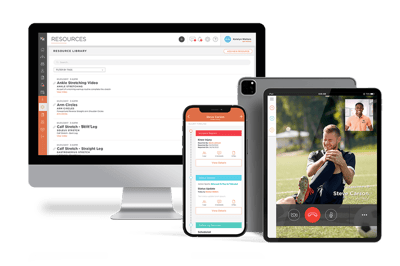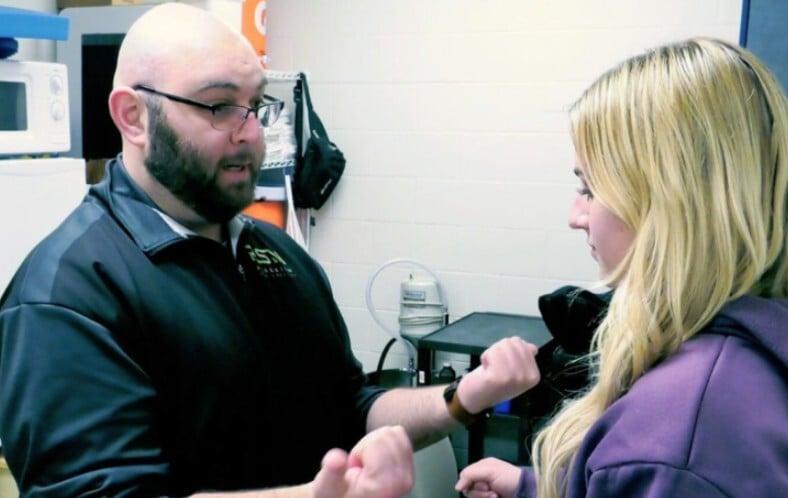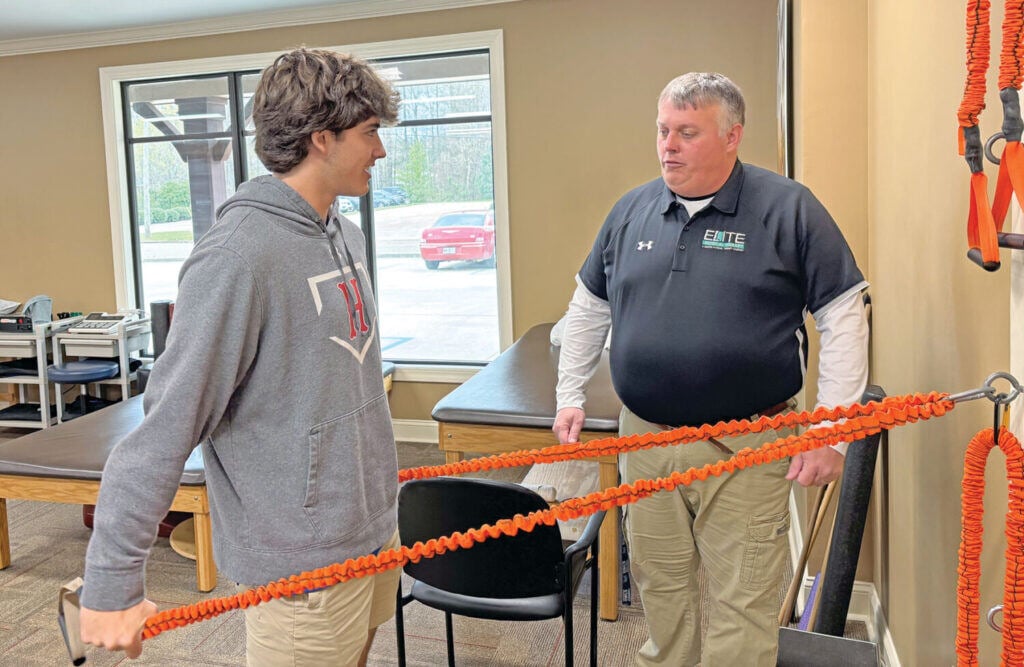More Time with Your Athletes, Less Time with Documents + Forms
 Healthcare providers spending a lot of time documenting care.
Healthcare providers spending a lot of time documenting care.
Primary care physicians average over 18 minutes, per patient visit, documenting in their electronic health records (EHR) system.
Those working in sports medicine are not far behind, spending an average of over 10 minutes documenting for each patient visit.
All of this time adds up quickly over the course of every day. While most providers spend more than 50% of their time on the task, the majority admit they're taking up 11% of their total time documenting late at night and on the weekends.
As we know, effective documentation facilitates communication among healthcare professionals, enables continuity of care for patients, and even supports legal obligations.
But while physicians, nurses, and pharmacists have a standardized EHR solution that may help them save some time, the world of sport medicine has been slower to catch up when it comes to how they record and track injuries as well as how they deal with paper forms.
All the paperwork involved in being an athletic trainer means they are spending far too much time at home or in the office late at night dealing with paperwork - rather than spending time with their athletes.
So Much Documenting
For ATs, documenting means having to carry around pen and paper everywhere they go and spending a great deal of time writing down notes on every encounter. More time is then needed to transfer all their handwritten notes to an electronic or paper evaluation file at the end of each day.
Because all this documentation takes up so much time, ATs may be tempted to only document the "bigger" or more severe encounters—the cases where they know they'll be seeing the athlete again for a follow-up or if there will be a referral.
By not tracking every single encounter, it could mean that initial injuries are not being documented, not all care is being covered effectively for every incident, that certain biases may be introduced into their documentation (this injury is more severe than that injury), and that their hard work may not be fully recognized.
For most ATs, they have to write everything down or take notes during the game and wait until later. This keeps them working longer hours when they have to go home to finish up or come in early to get it all done—otherwise the work piles up quickly when they wait. This also means that notes might not get entered or lost before they can be recorded.
The Storm of Forms
Athletic trainers also have time taken up by paper forms. They have to be printed up and handed out in-person, whenever possible, or ATs can hope the athletes take the form home. Or they have to hope the parents take the time to go to a website, download the forms, and turn them in.
Email does help with the distribution of forms, but ATs have to set their own reminders to follow up when they're not turned in. And there is no official way to track what has been turned in and what has not.
Even after all the forms have finally been submitted, there is the matter of keeping track of all this paperwork. Files need to be created, stored, and searched through when they are needed. And if a file gets lost... well, the whole process starts over again.
All in all, athletic trainers have to spend in inordinate amount of time with documentation and forms. This keeps them from being able to focus on the care of their athletes, which is why most have worked so hard to become healthcare providers.
But is there a better way?
 So, there used to be a sentiment that if someone saw you on your phone that you were staring at social media.
So, there used to be a sentiment that if someone saw you on your phone that you were staring at social media.
That's not the case anymore, but... if an AT is working on their phones it could still send a bad signal - that maybe they're not paying attention when someone gets hurt.
That was then. But not anymore!
Because Healthy Roster is a mobile app-first platform designed for athletic trainers to save time on documentation and forms.
With the app, ATs can document while they're on the field or court instantly. They can go home to relax after the game, just like everyone else!
"We did almost 500 physicals and because of Healthy Roster we were able to process all of our physicals (uploading them using iPads), without a glitch. In the past we would have done physicals and spent the next two days filling out paperwork. We estimate that by using Healthy Roster this year, we saved at least 40 man hours of work. Not to mention the confidence in having our physicals secure and readily available for our coaches and parents."
— Scott Arceneaux LAT, ATC, Dir. of Sports Medicine, St. Amant High School
Instead of missing something in their paper documentation, their able to cover it all on-the-go. And it is much quicker and easier to document every single encounter. They can use their voice-to-text feature to document every injury and still have time to keep their eyes on the field.
Healthy Roster has heard back from ATs who say that their mobile app use has saved them anywhere from 45 to 60 minutes a day from all previous methods they were using to document.
“While using Healthy Roster to get caught up on injury documentation, I found I was able to get so much done in very short amount of time. Healthy Roster is very easy to use and time efficient, which is key for athletic trainers. The same amount of work would have taken so much longer if I was still using our previous software."
— Julie Brough, Athletic Trainer, University Hospitals Cleveland Medical Center
And with their customizable, electronic forms, ATs can easily send them out and track all the forms that are turned in (or not turned in!) Everyone is in the same system and everything can be done from their phone, laptop, or on the computer in their office.
 Before Healthy Roster, athletic trainers would have to coordinate sending information to parents, coaches and doctors using a variety of methods. But using the platform gives ATs more flexibility on sending clinical data to stakeholders, which saves them time with such features as eFax and integrating Healthy Roster with their EHR.
Before Healthy Roster, athletic trainers would have to coordinate sending information to parents, coaches and doctors using a variety of methods. But using the platform gives ATs more flexibility on sending clinical data to stakeholders, which saves them time with such features as eFax and integrating Healthy Roster with their EHR.
Athletic Trainers can:
- Document from Anywhere—On the field or in the training room, Healthy Roster makes it easy to document when it is convenient for you. No longer do you have to wait until you get back home or the office to input information in your system.
- Communicate Securely and Easily—Streamlining communications with Healthy Roster gives you another way to save time. Stop giving out your personal cell number. No more random group chats or repeating all that’s been said. Easily and automatically send out updates on athlete injuries to parents, coaches, and doctors.
- Use Voice Dictation—One of the reasons why athletic trainers love our system is that they report saving 45-60 minutes a day on our system. And saving time is the name of the game.
- Log Treatments & Injuries Faster—No one loves documenting injuries. We know that. That is why we made it easy. On average, ATs save 5 hours per week with Healthy Roster. That is time you get back, to do what you love.
- Scan Paper to PDF—Easily scan everything, from doctor's notes to all your paper forms, to save even more time.
“Healthy Roster has been a welcome addition to our Sports Medicine Facility. The app has decreased our charting time, which has made us more productive clinically. Its ease of use is fantastic.”
— Eli Hallak, M.Ed., ATc, EMT, Director of Sports Medicine, St. Francis High School, CA
Ready to see how we can help you save time and improve care? Talk to us today to see how we can help with all your documentation and forms.
And you can sign up to watch all 4 recorded webinars in our Athletic Trainer Improvement Series to learn more about how to improve documentation, communication, and get back to caring for your athletes:
![HR Logo [Recovered]_Full Color Vertical-1](https://blog.healthyroster.com/hs-fs/hubfs/HR%20Logo%20%5BRecovered%5D_Full%20Color%20Vertical-1.png?width=199&height=178&name=HR%20Logo%20%5BRecovered%5D_Full%20Color%20Vertical-1.png)
 By
By



